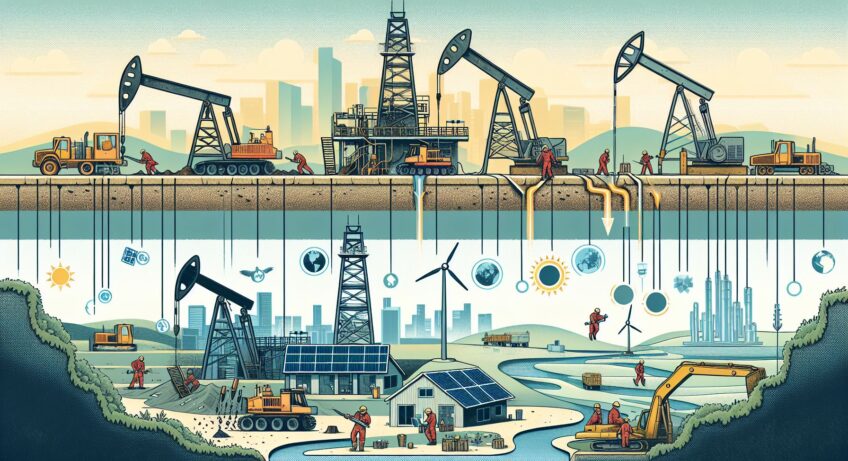Driving through the vast Canadian landscapes, one cannot help but be taken aback by the sheer magnitude of the oil and gas industry. It is an industry that has shaped Canada’s economy and played a crucial role in its development. With soaring production levels and remarkable contributions to the country’s GDP, there is no denying the significance of this sector. However, beneath the surface, lies a myriad of perplexing paradoxes that make the Canadian oil and gas industry unlike any other.
A Burgeoning Industry with Environmental Concerns
Canada is the world’s fourth-largest producer of oil and gas, boasting an abundance of natural resources that have fueled economic growth for years. The oil sands in Alberta, in particular, have captured global attention due to their vast reserves. While these oil sands hold great economic potential, they also pose notable environmental challenges. The extraction process involves the emission of greenhouse gases, deforestation, and water contamination. This paradox exemplifies the inherent conflict between economic prosperity and environmental sustainability.
Trading Partnerships: A Complex Web
The Canadian oil and gas industry is intricately woven into a complex web of trading partnerships, with the United States as its primary customer. The vast majority of Canadian oil exports head southward, satisfying the energy demands of our southern neighbor. However, despite this symbiotic relationship, there are occasional tensions between the two nations, often revolving around energy security and pricing concerns. The industry must navigate this intricate web of relationships while ensuring its stability in the face of changing geopolitical dynamics.
Indigenous Rights and Reconciliation
A contentious issue that highlights the paradoxes within the Canadian oil and gas industry lies in its relationship with Indigenous peoples. Canada has made significant strides towards reconciliation, recognizing the rights of Indigenous communities and their inherent connection to the land. Yet, this recognition has clashed with the industry’s need for resource extraction. Balancing economic development with Indigenous rights and environmental stewardship has proven to be a constant challenge, requiring ongoing dialogue and collaboration.
The Transition to a Sustainable Future
As the world grapples with the urgent need to combat climate change, the Canadian oil and gas industry faces the perplexing task of transitioning to a sustainable future. This shift involves diversifying the energy mix, reducing greenhouse gas emissions, and embracing renewable energy sources. The industry’s success in this endeavor will not only affect Canada’s environmental standing but also its global reputation as a responsible energy producer.
Technology at the Forefront
The Canadian oil and gas industry has always been at the forefront of technological advancements. From innovative drilling techniques to cutting-edge exploration methods, technology has played an integral role in maximizing resource extraction efficiency. This commitment to innovation puts Canada’s industry in a unique position to lead the way in developing sustainable technologies that could potentially revolutionize the energy sector. Embracing renewable energy solutions and reducing the environmental footprint of extraction processes are crucial areas where technological breakthroughs are urgently needed.
Conclusion
The Canadian oil and gas industry is a complex tapestry interwoven with paradoxes. It simultaneously drives economic growth and poses environmental challenges, relies on trading partnerships while holding its own ground, and navigates Indigenous rights while pursuing resource extraction. As the world transitions towards a more sustainable future, the industry faces the formidable task of reinventing itself while capitalizing on the technological advancements that will lead the way. Navigating these perplexities requires a delicate balance, but it is an essential journey towards a more sustainable and prosperous future for Canada and the world.

